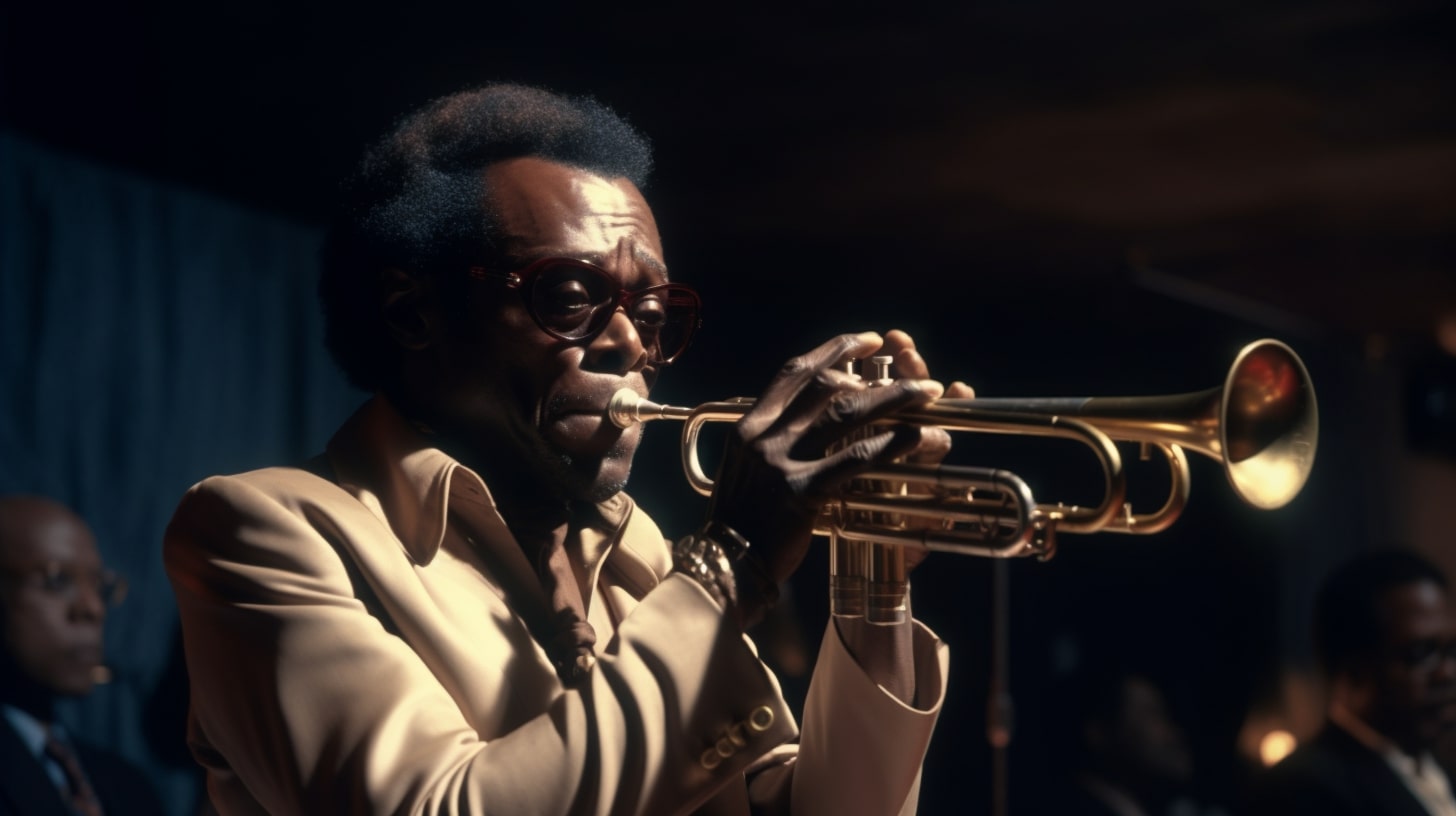Miles Davis played the trumpet, his instrument of choice, throughout his illustrious career. He was a key figure in various styles within jazz, such as bebop, modal, and fusion, often innovating and bridging gaps between different genres.
Throughout the years, Miles Davis’ influential trumpet playing continued to have a significant impact on the jazz world and popular culture.
Contents
Miles Davis and His Instrument
The Trumpet
Miles Davis, an American trumpeter, bandleader, and composer, is considered one of the most influential and acclaimed figures in the history of jazz and 20th-century music.
Born on May 26, 1926, he was primarily known for playing the trumpet, an instrument he began to learn at the age of 13. Davis’ style on the trumpet evolved throughout his career, starting with bebop, a fast, improvisational style of jazz instrumental that defined the modern jazz era. Later in his career, he transitioned to modal jazz with groundbreaking albums like “Kind of Blue,” which furthered the modal experiments of “Milestones.” His distinctive trumpet playing is often regarded as a major factor in his long and successful career.
French Horn
While the trumpet was Davis’ primary instrument, he also played the French horn during his career. In the late 1940s and early 1950s, he studied at the Juilliard School in New York City, where he had the opportunity to learn and play various brass instruments. Although the French horn was not Davis’ main focus, his ability to play the instrument showcased his versatility and broadened his musical horizons.
Flugelhorn
Another instrument that Miles Davis was known to play is the flugelhorn. Similar to the trumpet in some ways, the flugelhorn is a mellower-sounding brass instrument. Davis explored various musical styles throughout his career, and the flugelhorn allowed him to experiment with different sounds and tones. Although not as prominently featured in his discography as the trumpet, the flugelhorn added a unique touch to some of Davis’ compositions and performances.
In summary, Miles Davis was a talented musician known primarily for his skill with the trumpet, his key instrument throughout his career. However, his ability to play the French horn and flugelhorn also demonstrated his versatility and willingness to explore different facets of musical expression.
Musical Evolution and Styles
Bebop and Birth of the Cool
Miles Davis began his career in the mid-1940s, playing bebop with Charlie Parker’s quintet. This style emphasized fast tempo, virtuosic improvisation, and complex harmonic progressions. In the late 1940s, Davis sought a new direction. He collaborated with arranger Gil Evans, forming a nonet that included baritone saxophone, French horn, and tuba. This led to the development of the “cool jazz” style characterized by a more relaxed tempo and intricate arrangements, which influenced the West Coast Jazz style.
Modal Jazz and Kind of Blue
In the late 1950s, Miles Davis shifted his focus to modal jazz. This style used scales or modes as the basis for improvisation rather than fixed chord progressions.
This approach allowed for greater freedom and creativity in performances. His 1959 album Kind of Blue exemplified this style and featured jazz legends like John Coltrane, Bill Evans, and Cannonball Adderley. The album is considered one of the most important and influential works in the history of jazz.
| Album | Year | Style |
|---|---|---|
| Kind of Blue | 1959 | Modal Jazz |
Jazz Fusion and Bitches Brew
In the late 1960s, Davis became interested in combining elements of jazz with rock and funk. This new genre, called jazz fusion, incorporated electric instruments like guitars, keyboards, and electronic effects. His groundbreaking 1969 album, Bitches Brew, is a prime example of this innovative style.
Some key features of jazz fusion include:
- Electric instruments: guitar, keyboards, bass
- Complex rhythms and extended improvisations
- Incorporation of rock, funk, and other genres
Later Career and Tutu
In his later career, Davis dabbled in various musical styles. Throughout the 1980s, he primarily focused on jazz-rock dance music. However, he also explored other genres, such as returning to his blues roots with Star People (1982) and performing Gil Evans-influenced orchestral pieces in Music from Siesta (1987). His 1986 album, Tutu, showcased his unique ability to blend jazz with contemporary pop, soul, and electronic music elements.
To sum up, Miles Davis, a legendary trumpeter and composer, continuously evolved and explored diverse styles throughout his career. From bebop to cool jazz, modal jazz to fusion, and late-career experimentation, his contributions significantly impacted the landscape of 20th-century music and left a lasting legacy for generations to come.






